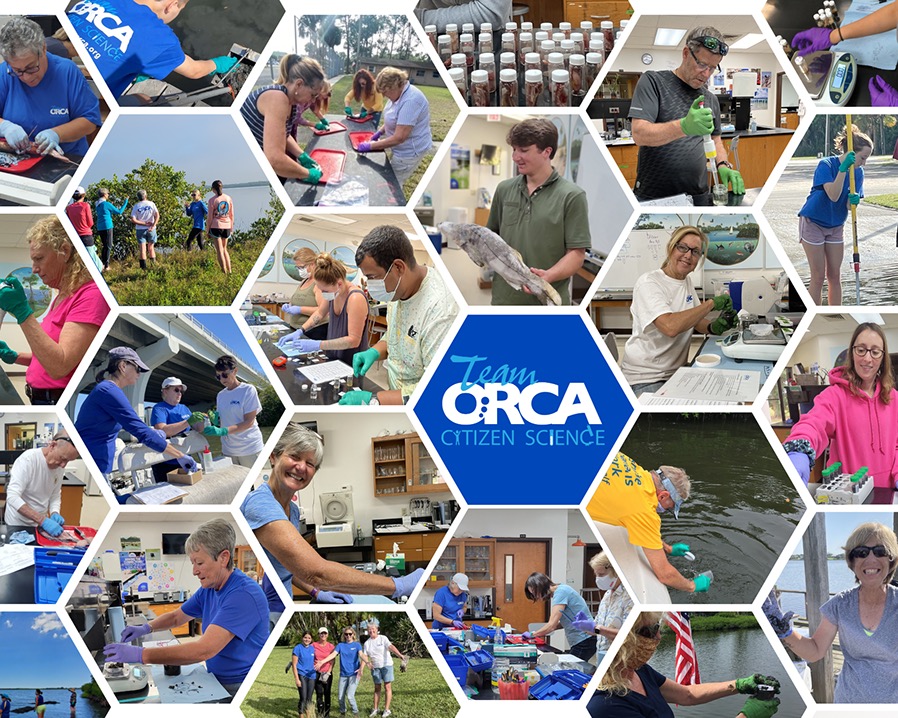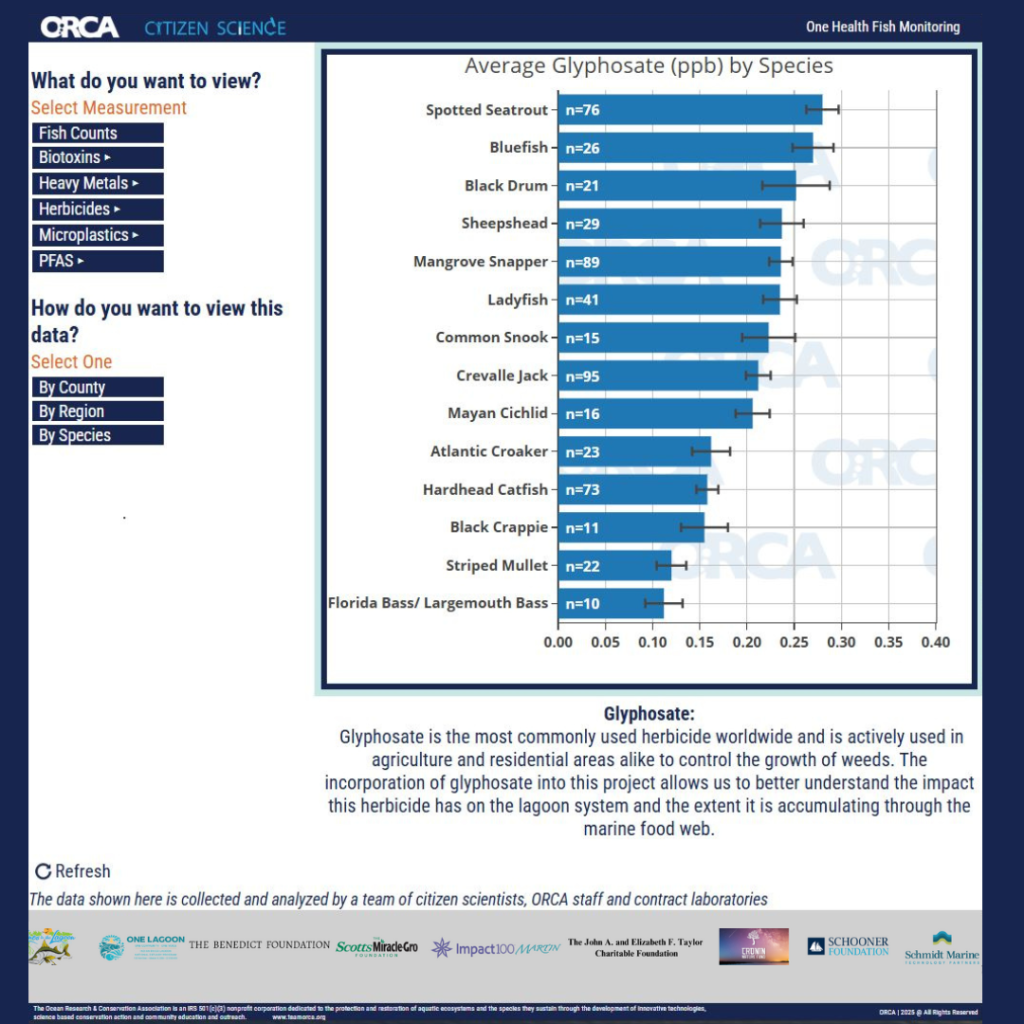CITIZEN SCIENCE DATA
In order to understand complex ecological problems, you need large amounts of data that is consistently collected over a long period of time.
Explore ORCA's Fish Monitoring Project Data
The One Health Fish Monitoring Citizen Science Project tests for toxins and toxicants in fish from the Indian River Lagoon and connecting waterways. Current analyses in this project include: heavy metals (mercury, lead, cadmium), cyanotoxins (microcystin and saxitoxin), microplastics, and per- and polyfluoroalkyl substances (PFAS). Additional analyses coming soon include: pharmaceuticals, controlled substances and parasites. This is an ongoing project, and the data presented will continue to be updated as additional samples are collected and analyzed.
310
CITIZEN SCIENTISTS
1580
FISH PROCESSED
CLICK HERE TO EXPLORE THE DATA
This data was collected between 2019 and 2025, and will be periodically updated. If you’d like to see additional data, please e-mail your request to fish@teamorca.org.
Explore Land to Sea Project Data
Our Land to Sea projects—including living and buffered shorelines—are nature-based solutions designed to improve water quality, stabilize eroding shorelines, and restore habitat throughout the Indian River Lagoon. Living shorelines incorporate native vegetation and structures like breakwaters to prevent erosion, while buffered shorelines use Florida-friendly plants and stormwater management features such as berms and swales to filter runoff before it reaches the lagoon. These projects are implemented in collaboration with citizen scientists and local partners and are monitored for at least two years post-installation to assess ecological benefits, track reductions in nutrient and pollutant loads, and support long-term success. This science-guided, community-powered approach ensures that every project contributes meaningful, measurable improvements to lagoon health.
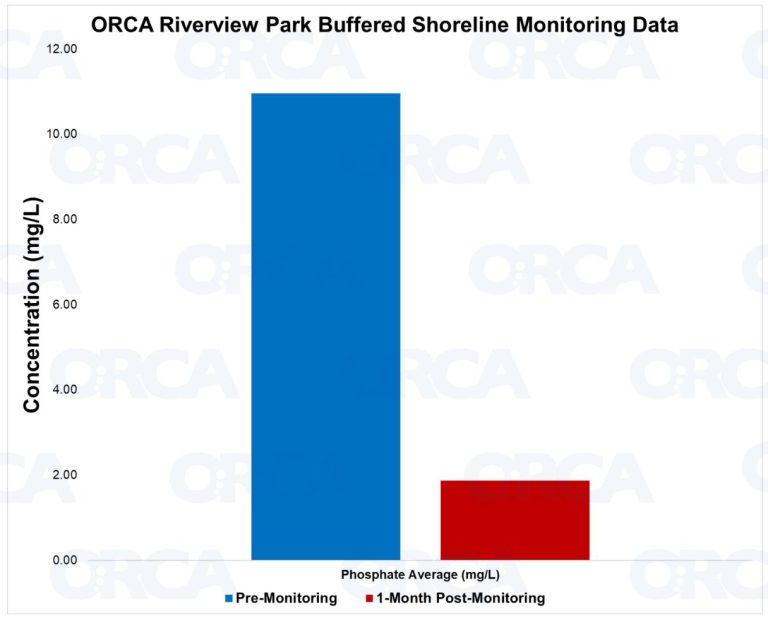
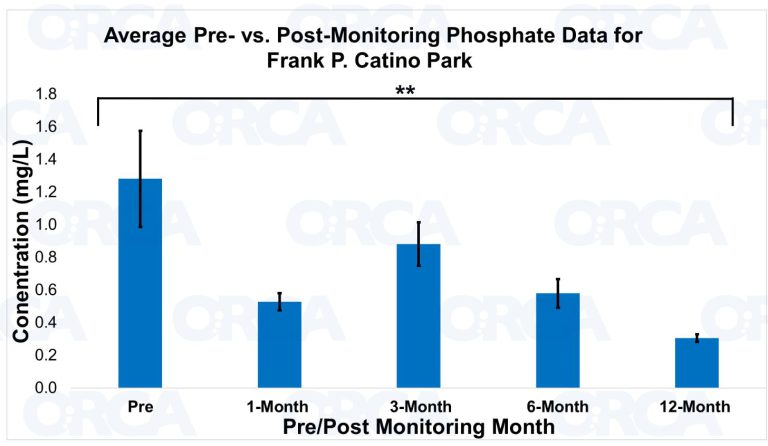
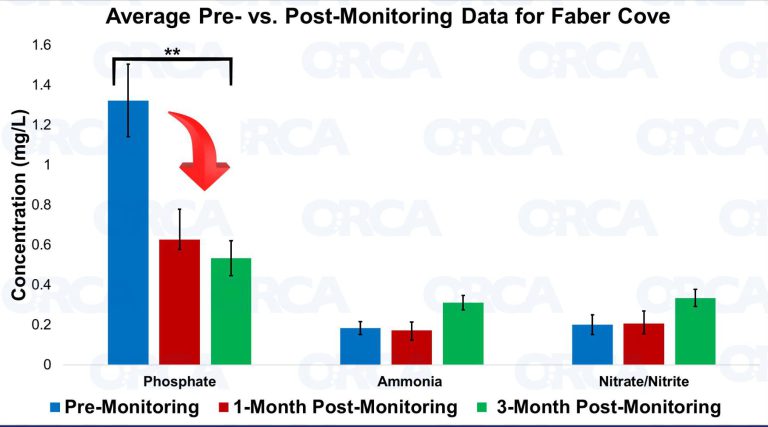
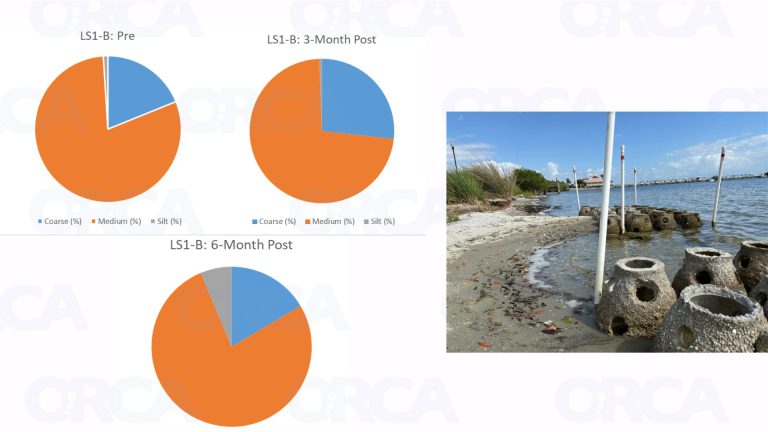
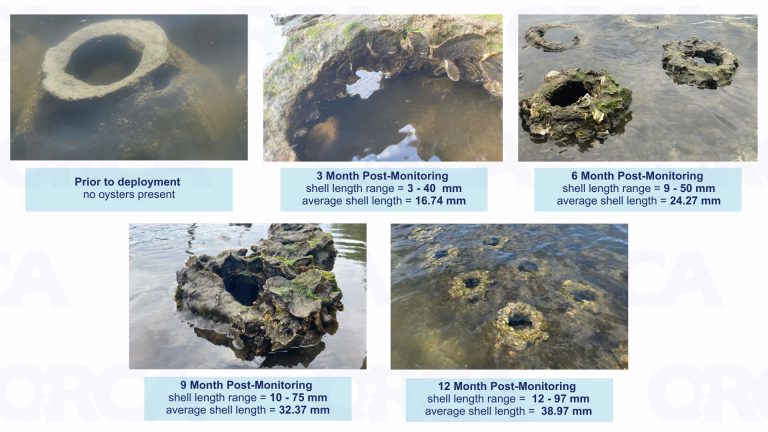
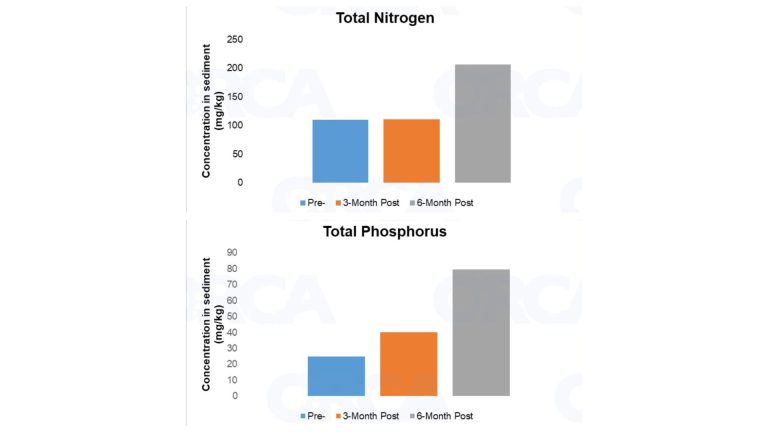
[1] Reynolds, L., Stephens, N. C., Barry, S. C., & Smyth, A. R. (2021). Living Shoreline Monitoring—How do I evaluate the environmental benefits of my living shoreline? SS694/SL481, 1/2021. EDIS, 2021(1).
This data was collected between 2019 and 2025, and will be periodically updated. If you’d like to see additional data, please e-mail your request to nstephens@teamorca.org.
A Day in the Life of the Indian River Lagoon Data
A Day in the Life of the Indian River Lagoon Student Citizen Science Project
Each year, hundreds of students, teachers, and environmental partners collect scientific data at various sampling sites all along the Indian River Lagoon on the same day in October. Student citizen scientists use hands-on field techniques to measure the same chemical, physical, and biological parameters to evaluate how their local piece of the estuary fits into the larger ecosystem. Teachers are encouraged to integrate A Day in the Life (ADIL) data and findings into their curriculum, science fair projects, and student-led research throughout the academic year. This hands-on, place-based learning opportunity deepens students’ understanding of the ecological health of the Indian River Lagoon and the vital connections between their sampling sites and the broader watershed.
In addition to core water quality and biological data, this project also includes the collection and analysis of glyphosate levels—a commonly used herbicide—providing a powerful opportunity to explore the impact of land use and human activity on aquatic ecosystems. Incorporating this real-world data fosters scientific inquiry, environmental literacy, and a stronger sense of stewardship in students.
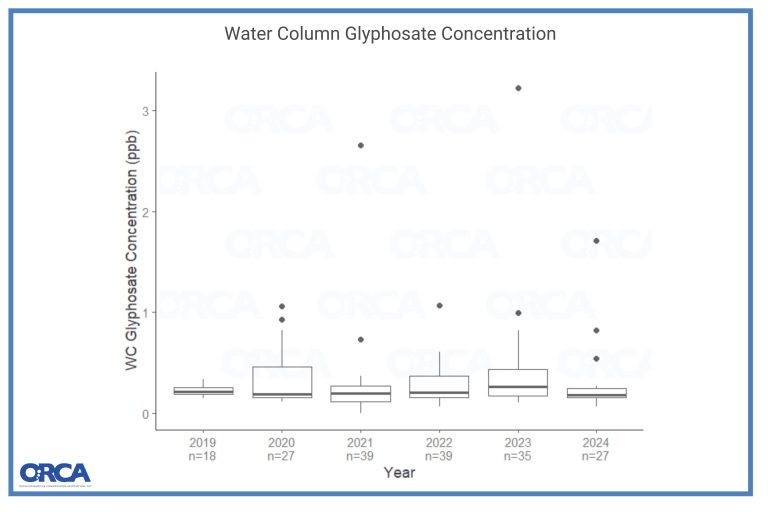
This figure shows water column glyphosate concentrations from A Day in the Life of the Indian River Lagoon (ADIL) Citizen Science project from 2019-2024. Teams of citizen scientists including students and teachers with the support of a local environmental partner, collected single water column samples from a specific site within the Indian River Lagoon (IRL) or its contributing waterways – all on a single day in October. These samples have been collected for six consecutive years. Glyphosate was measured in the water samples by ORCA scientists using a commercially-available ELISA (enzyme-linked immunosorbent assay) kit. This box and whisker plot shows the distribution of glyphosate concentration by year from 2019 to 2024. This plot shows year on the x-axis and the water column glyphosate concentration in parts per billion (ppb) on the y axis. This figure makes it evident that glyphosate is present across the IRL at low concentrations (mean: 0.305 +/- st dev: 0.357 ppb). There are many variables that could affect glyphosate concentration including application time and quantity, chemical composition of herbicide, wind direction, currents, rainfall, temperature, and more. There was no significant difference across years when running an ANOVA test on this data (p-value >0.05). Of the years sampled, 2020 and 2023 tend to have higher concentrations while 2021 and 2024 have typically lower concentrations. In conclusion, it appears glyphosate fluctuates slightly between years but there is no overall trend in glyphosate concentration levels observed in the IRL shown through this data.
Dive into Team ORCA’s Citizen Science blog to read about the importance of data collection, why we monitor, the significance of citizen science and more!
